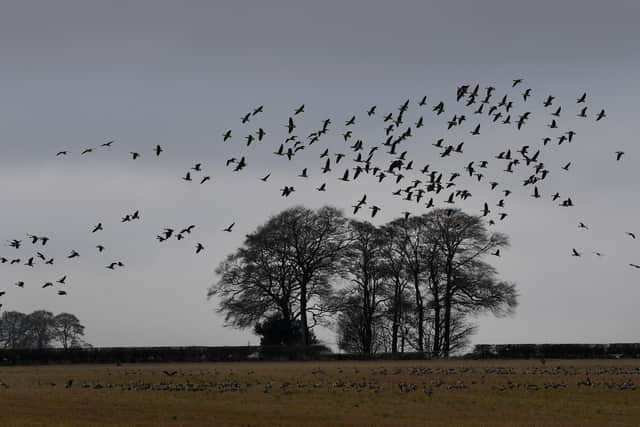Shooters recruited for 'early warning system' to help farmers prepare for future bird flu outbreaks
This year’s outbreak has been the largest and longest ever experienced in the UK and in many parts of Europe, with more than 120 cases so far in this country.
Dr Alastair Ward, Associate Professor of Biodiversity and Ecosystem Management at Leeds University, said in past years “a few tens of birds” had tested positive, and the number of cases so far this season were “unheard of”.
Advertisement
Hide AdAdvertisement
Hide AdHe said: “You’d normally expect to see it peak over the winter months as the virus comes in from Eurasia and you’d expect it to peter out and gradually disappear during the spring. It might be spending the summer in Europe, which it hasn’t done before.


“We’re continuing to see suspect cases in wild birds...it could still be around. We certainly have evidence of bird flu throughout Europe, Eurasia and North America so it is probably fair to say it is approaching a pandemic and there are worrying levels seen in wild bird populations.”
There are many strains of the influenza virus, which comes from the same family as the one that causes Covid. Like Covid they mutate, adapt and evolve very quickly.
Dr Ward, part of a new consortium given £1.5m taxpayers’ money to come up with strategies to tackle outbreaks, is looking at whether he can set up an early warning system to alert farmers to put bio-security measures in place before the first outbreaks are spotted, using the carcases of dead birds shot on the Humber, the Wash, the Solway Firth and Lancashire coast.
Advertisement
Hide AdAdvertisement
Hide AdBird flu is most commonly found in ducks, geese and swans and when the shooting season begins this September, wildfowlers will be asked to swab carcases and send the samples for testing at the Animal and Plant Health Agency at Weybridge, Surrey.
During the 2020/2021 season a teal shot on the Humber tested positive and then a similar strain appeared in Kent. A widgeon, also shot on the Humber, was found with a highly pathogenic strain (the potential for the virus to kill chickens) which later appeared in Cheshire.
Dr Ward said the current outbreak alone was likely to have cost more than £100m, and early warnings could result in massive savings, including a big reduction in the numbers of domestic birds slaughtered to try and control the disease.
He added: “It’s a big worry for conservation; there are potentially wild birds dying off and these are populations already under significant pressure from another raft of things. It is also worrying for the poultry industry. Since hunters lawfully shoot several thousand ducks and geese in the UK each year, these could offer an excellent resource for testing for the disease.
“This is what we are seeking to evaluate during our study.”
Comment Guidelines
National World encourages reader discussion on our stories. User feedback, insights and back-and-forth exchanges add a rich layer of context to reporting. Please review our Community Guidelines before commenting.